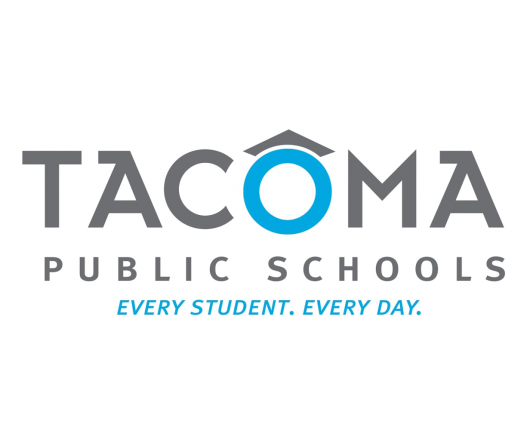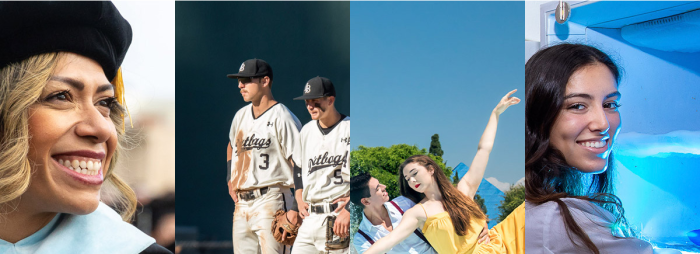Leadership: Curiosity and Collaboration

“Around here, however, we don’t look backwards for very long. We keep moving forward,
opening up new doors, and doing new things, because we’re curious…
and curiosity keeps leading us down new paths.”
There is a lot of wisdom in this quote from Walt Disney. Curiosity often leads to collaboration; in that sense, they’re often two sides of the same coin. Think about it! If I am curious about something, I will ask questions. Questions often spur on more questions and often creative answers. Of course, sometimes, the questions can be as interesting as some of the answers. Questions are, more often than not, directed at another person or persons. This is the path often traveled that leads the curious to become collaborative, even if in an ad-hoc manner. The word ‘Team’ can in fact be thought of as an acronym.
Consider the idea that a T.E.A.M. works:
Together Engaging and Achieving Momentum (or Magic)
Often the opposite is thought of as a Silo. Consider the idea that people who work in a S.I.L.O. do so as a: Single Independent Lone Operator
These are, of course, generalizations, setting up a scenario where one is seen as being better than the other. In truth, there are times when you need to get your work done, especially the parts assigned to you, not to others. Meeting to collaborate is wonderful, but if overdone, it can erode time to do what needs to be done in your own job. That said, meetings and opportunities to collaborate should be professional learning opportunities. On this point, Tom Peters in his outstanding book, ‘The Excellence Dividend’ makes a very astute observation.
Every meeting that does not stir the imagination AND curiosity of attendees AND increase bonding AND cooperation AND engagement AND sense of worth AND motivate rapid action AND enhance enthusiasm is a Permanently Lost Opportunity.
Peters, Tom. (2018) The Excellence Dividend (eBook). London: Nicholas Brealey Publishing. (Ch 15. p420 of 496 pages).
It is hard to find fault with the logic that Tom Peters puts forward here. It could even be taken, in the opinion of this author, that if a meeting can just as easily be covered in an email, then the meeting is most likely wasted time. Time that could have been more purposefully used on other more pressing needs. The other observation to be made is that the ‘infomercial’ component of, say, a 1-hour meeting should not exceed the first 10 minutes. One way to make it a professional learning opportunity would be to circulate with the agenda that goes to the team, some professional reading that might be pertinent, even connected to something the team is working on. Use that research as the basis of your work collaboration and team meetings. In the process, you are growing professionally your team, which is, of course, what good leaders do.
If COVID-19 taught us anything, it was that when the chips are down, and people are forced to work from home, often in isolation from their colleagues, the need to collaborate becomes essential. One might even go as far as to assert that it is essential for the personal and professional well-being of everyone. As any Anthropologist will tell you, we humans are social beings. We need to interact with other human beings to thrive, grow, and be mentally stimulated, all of which go to our overall sense of well-being. Isolation for extended periods of time is not good for the human condition. In that respect, we should not, in organizations, downplay or underestimate the power that good collaboration brings. Collaboration should follow the principles of Psychological Safety and harness the benefits of it, as explained by Harvard Business School Professor Amy C. Edmondson in her groundbreaking book, ‘The Fearless Organization’.
“When a work environment has reasonably high psychological safety, good things happen: mistakes are reported quickly so that prompt corrective action can be taken; seamless coordination across groups or departments is enabled, and potentially game-changing ideas for innovation are shared. In short, psychological safety is a crucial source of value creation in organizations operating in a complex, changing environment.”
Edmondson, Amy C. (2019). The fearless organization: creating psychological safety in the workplace for learning, innovation, and growth (eBook). New Jersey: John Wiley & Sons, Inc. (Introduction).
When it comes to true collaboration, it must be said that it is crucial for the team leader to have the ability to draw everyone into the project and into the work of the team. Creating purposeful belonging goes a long way toward the collaborative work of each person, creating synergy and success. People who can bring others along and are willing to collaborate and contribute will often be sought out to collaborate in future projects or be on future committees of strategic importance. In this regard, having such people goes to the heart of a highly structured, well-designed recruitment process that aims to identify such individuals from the outset. This goes to the essence of the often-quoted mantra about Excellence. If asked what is Excellence, Tom Peters would reply: “Excellence is the next five minutes” (cf: Peters. Thomas, J., Green. Nancye. (2022). Tom Peters’ Compact Guide to Excellence (eBook). Washington D.C. USA: IdeaPress Publishing. p318 of 332.). Your success or failure will be determined by this. Professor Amy C. Edmondson also offers a powerful insight into collaboration.
In sum, this book proposes that building the future requires three crucial, ongoing activities: building a shared vision that evolves as more is learned, building meaningful cross-sector relationships, and building an iterative collaborative process.
Edmondson, Amy. C., Reynolds, Susan, Salter. (2016). Building the Future: Big Teaming for Audacious Innovation. Oakland, CA: Berrett-Koehler Publishers. (23 of 240).
The last point by Amy C. Edmondson, is an important one. In organizations that value truth, trust, and excellence, collaboration will most likely have evolved to be an iterative process, one that feeds back on itself and changes for the better, into something else that is more evolved. Collaboration can occur on many levels and in many ways. At its most basic, it is one or two individuals seeking out an expert opinion from another person in the organization. Consider this fictional conversation between person A, Alice, and person B, Beth.
Alice: Hi Beth, I was wondering if you could help me with something.
Beth: Sure, Alice, if I can, I’d love to help you with your question.
Alice: My team was looking at this policy document and felt it would be important to update the current policy, reflecting this new update on the research. The issue is that most of them believe that the update would change the policy a fair bit; some even thought it would be a new policy. What should we do?
Beth: Yes, it sounds like a major deviation from the current policy. It has the potential to enhance our reputation amongst our clients and help with managing the financial aspects of the policy as well.
Alice: That’s what the team thought.
Beth: The best way forward that I would recommend is to write a brief report proposing the changes for the consideration of the Leadership Team. It needn’t be long. The more voices we have on this, the better the outcome. I’d be happy to help you with this.
Alice: Thanks, Beth.
Beth: Anytime Alice.
The ten-minute corridor collaboration is a fairly common feature in many workplaces. If Beth had suggested a ‘Review Committee’ be formed, with representatives from different areas of the organization, then the conversation and the collaboration suddenly becomes more formal and more involved. The caveat, of course, is that collaboration should not be the guise under which an underperforming leader palms tasks off to others when they rightly belong to the underperforming leader to attend to. Ultimately people will see through that falsity and decide not to collaborate with that leader.
Both scenarios have certain key elements that point to what is involved in a genuine collaboration.
- Identify the issue.
- Consider who the best person(s) would be to consult for expert advice and opinion(s).
- Be clear on the objective of the exercise.
- Be clear about the different roles people will be asked to take, especially if the collaboration involves a formal process.
- Ascertain clarity around timelines.
- Undertake a broad reading of the research or of relevant material.
- Listen to the others in the collaboration and listen to ensure a diverse range of views and opinions are heard.
- Gather the information and present it to the people requesting the collaboration or to the Committee, if one has been formed.
- Finalize the report and recommendations. Ensure it is clear and easy to understand.
- Arrive at a decision and collaboratively implement it.
- Review the implementation process, especially if it was decided via a committee.
- Review the process from beginning to end to seek areas of improvement.


Meeting to collaborate is wonderful, but if overdone, it can erode time to do what needs to be done in your own job.
There are, of course, good reasons to look for opportunities to collaborate. One obvious one is that it can help to discover good, clear-thinking leaders of the future. Leaders who know how to listen and bring empathy to the table. James Kouzes and Barry Posner, in their excellent work, ‘Learning Leadership, ’ made this pertinent observation.
“A culture of leadership that supports collaborative behavior is going to be more hospitable to the development of leaders than one that is internally competitive and focuses on a winner-take-all approach to selecting and promoting leaders.”
Kouzes, James M., Posner, Barry Z. (2016). Learning Leadership: The Five Fundamentals of Becoming an Exemplary Leader (eBook). San Francisco. CA: Wiley Publishing. (Ch 18, 205 of 272).
The other part of this topic about collaboration is curiosity. Simply put, human beings can’t live a life in which curiosity hasn’t featured at least once. This article started with a quote from Walt Disney. For Walt Disney to have carved out of nothing, other than a vision or dream of what could be, such a highly successful venture, speaks to his sense of creativity, his willingness to call on others to collaborate with him, and his curious mind, wondering what could be…if? It is important to be curious about life and work and to learn the power of the ‘I Wonder’ questions. The following are examples of how they could be framed.
I wonder how this could happen?
I wonder what would happen if…?
I wonder when it might happen?
I wonder where this could happen?
I wonder why it could or should happen?
Think back to the fictional conversation used earlier in this article, between Alice and Beth. They are wondering: How the policy might change? What impact would the policy change have? When would any policy change take effect? Where might the policy change being suggested be trialed? Why should we make the policy change? Why should the policy not be changed? These powerful questions give them the answers they need to move forward on the issue. More importantly, a clear set of focus questions for the collaboration, born out of questions of wonder and questions of curiosity, emerges. If curiosity and collaboration are important to an organization, they need to not just hire people that are technically good at their job. Leaders need to hire people with people skills. People who collaborate, who can listen, who are curious and who desire to build a positive culture where curiosity and collaboration is the norm. This in turn provides the truth they seek and creates bonds of trust between key players. If you want people to be excellent leaders, they need to be curious and they need to collaborate, which means they have to proactively engage with other people and put people first.
“You can design and create and build the most wonderful place in the world.
But it takes people to make the dream a reality.”
Want new articles before they get published? Subscribe to our Awesome Newsletter.

CAREER ADVICE

GOV TALK




